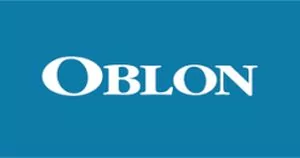- in United States
- with readers working within the Media & Information and Law Firm industries
On April 18, 2025, the Court of Appeals for the Federal Circuit issued a precedential decision relating to a question of whether claims that do no more than apply established methods of machine learning to a new data environment are patent eligible. A copy of the decision can be found here.
Appellant Recentive Analytics, Inc. ("Recentive"), is the owner of U.S. Patent Nos. 10,911,811 ("'811 patent"), 10,958,957 ("'957 patent"), 11,386,367 ("'367 patent"), and 11,537,960 ("'960 patent").The patents in question claimed the use of machine learning for the generation of network maps and schedules for television broadcasts and live events.
Recentive sued appellees Fox Corp., Fox Broadcasting Company, LLC, and Fox Sports Productions, LLC (collectively, "Fox") for infringement. The district court dismissed, concluding that the patents were directed to ineligible subject matter under 35 U.S.C. § 101. The CAFC affirmed the dismissal.
Exemplary Claim 1 of the '367 patent is shown below.
A computer-implemented method of dynamically generating an event schedule, the method comprising:
- receiving one or more event parameters for series of live events, wherein the one or more event parameters comprise at least one of venue availability, venue locations, proposed ticket prices, performer fees, venue fees, scheduled performances by one or more performers, or any combination thereof;
- receiving one or more event target features associated with the series of live events, wherein the one or more event target features comprise at least one of event attendance, event profit, event revenue, event expenses, or any combination thereof;
- providing the one or more event parameters and the one or more event target features to a machine learning (ML) model, wherein the ML model is at least one of a neural network ML model and a support vector ML model;
- iteratively training the ML model to identify relationships between different event parameters and the one or more event target features using historical data corresponding to one or more previous series of live events, wherein such iterative training improves the accuracy of the ML model;
- receiving, from a user, one or more user-specific event parameters for a future series of live events to be held in a plurality of geographic regions;
- receiving, from the user, one or more user-specific event weights representing one or more prioritized event target features associated with the future series of live events;
- providing the one or more user-specific event parameters and the one or more user-specific event weights to the trained ML model;
- generating, via the trained ML model, a schedule for the future series of live events that is optimized relative to the one or more prioritized event target features;
- detecting a real-time change to the one or more user-specific event parameters;
- providing the real-time change to the trained ML model to improve the accuracy of the trained ML model; and
- updating, via the trained ML model, the schedule for the future series of live events such that the schedule remains optimized relative to the one or more prioritized event target features in view of the real-time change to the one or more user-specific event parameters.
Notably, the specification of the '367 patent states that "In general, any suitable machine learning technique can be used, such as, for example: a gradient boosted random forest, a regression, a neural network, a decision tree, a support vector machine, a Bayesian network, other type of technique."Recentive characterized its patents as introducing "the application of machine learning models to the unsophisticated, and equally niche, prior art field of generating network maps for broadcasting live events and live event schedules."
In the discussion, the Court stated that "[w]e have long recognized that '[a]n abstract idea does not become nonabstract by limiting the invention to a particular field of use or technological environment."
Perhaps the strongest argument made by Recentive was that the inventive concept in its patents is "using machine learning to dynamically generate optimized maps and schedules based on real-time data and update them based on changing conditions."These features are reflected in the above claim from the '367 patent since the claim does include feature for tailoring the input parameters to the machine learning model to achieve a specialized output and is also providing real-time updates to the model based on detecting a change.
However, the Court's analysis found that "the requirements that the machine learning model be "iteratively trained" or dynamically adjusted in the Machine Learning Training patents do not represent a technological improvement.Recentive's own representations about the nature of machine learning vitiate this argument:Iterative training using selected training material and dynamic adjustments based on real-time changes are incident to the very nature of machine learning."
The Court concluded by stating that "Machine learning is a burgeoning and increasingly important field and may lead to patent-eligible improvements in technology.Today, we hold only that patents that do no more than claim the application of generic machine learning to new data environments, without disclosing improvements to the machine learning models to be applied, are patent ineligible under § 101."
This case will have huge ramifications for many patent applications or existing patents which utilize machine learning.Simply put, there are many applications which are using machine learning in a particular industry or commercial application without creating a new machine learning technique from scratch.In fact, to avoid issues related to lack of enablement and written description, many of these applications rely upon the well understood techniques of machine learning when disclosing the machine learning component of the invention.This case will trigger greater scrutiny for these types cases, especially when the features outside of the machine learning portion of the claim are comparable to a mental process, method of organizing human activity, or mathematical concept (such as the generation of network maps and schedules for television broadcasts and live events).
We will have more analysis on this important case in upcoming posts, such as (i) comparing this decision to recent USPTO examples on AI subject matter eligibility, and (ii) developing practice tips for drafting machine learning applications based on this decision.
The content of this article is intended to provide a general guide to the subject matter. Specialist advice should be sought about your specific circumstances.


